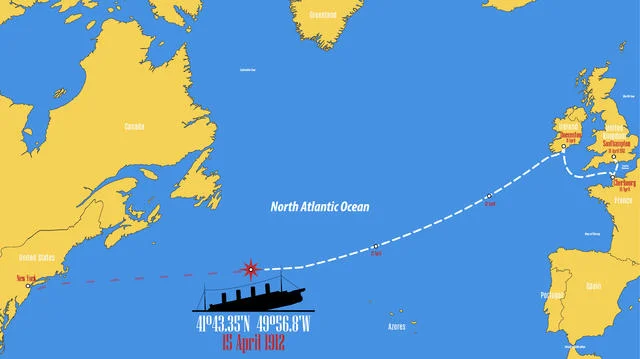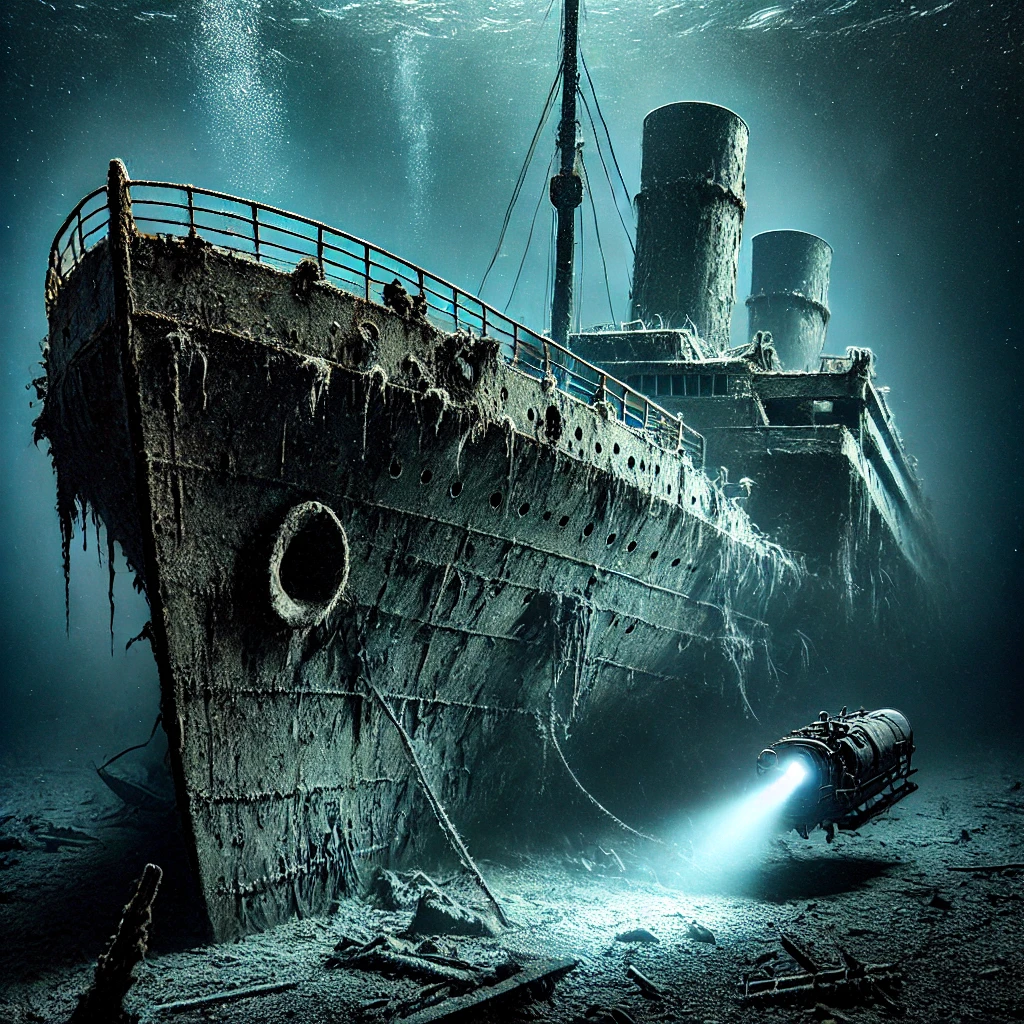

It was meant to be unsinkable. A feat of human engineering, a testament to progress, a floating city of opulence and power. But in the dead of night on April 15, 1912, as the freezing Atlantic swallowed steel, wood, and over 1,500 lives, all those certainties shattered.
More than a century later, the Titanic remains one of the most haunting maritime disasters in history. From where did the Titanic sink on a map to how many people died on the Titanic, the tragedy is still studied, debated, and reimagined in books, films, and conspiracy theories. But one truth remains: this was more than just a shipwreck—it was a turning point in history.
This is the story of where the Titanic sank in real life, why it wasn’t saved, and the chilling remnants of a ship that still rests in the darkness of the Atlantic.
Where Did the Titanic Sink in the Ocean?

The Titanic sank in the North Atlantic Ocean, about 370 miles (595 km) south-southeast off the coast of Newfoundland, Canada. The ship hit an iceberg at 11:40 PM on April 14, 1912, and fully submerged beneath the waves by 2:20 AM on April 15, 1912.
For decades, the precise location of where the Titanic sank in real life remained a mystery, but in 1985, Dr. Robert Ballard’s team discovered the wreckage lying at a depth of about 12,500 feet (3,800 meters). Today, the coordinates of the wreck are known as 41°43’35” N, 49°56’54” W.
This tragic spot, once the stage for human loss and suffering, is now a silent graveyard, frozen in time beneath the crushing weight of the ocean.
Where Did the Titanic Sink on a Map?
If you were to search where did the Titanic sink on Google Earth, you would find its exact resting place deep in the Atlantic Ocean. Though invisible from the surface, the wreck is marked on historical and modern maritime maps.
Today, satellite imagery and underwater exploration allow researchers and enthusiasts to see where the Titanic sank on a map, and many tours offer virtual diving experiences to explore the site from afar.
Where Did the Titanic Sail From?
The Titanic began its maiden voyage from Southampton, England, on April 10, 1912. It made two scheduled stops before heading into open waters:
✔ Cherbourg, France – where wealthy passengers, including John Jacob Astor IV, boarded.
✔ Queenstown (now Cobh), Ireland – where more passengers, primarily third-class immigrants, embarked on the ill-fated journey to America.
From there, the Titanic set sail for New York City, but it would never reach its destination.
What Time Did the Titanic Sink?
The timeline of the Titanic disaster is as haunting as it is precise:
- April 14, 1912, 11:40 PM – The Titanic collides with an iceberg.
- April 15, 1912, 12:00 AM – 2:00 AM – Passengers are evacuated, lifeboats lower into the freezing waters, and distress signals are sent.
- April 15, 1912, 2:20 AM – The Titanic disappears beneath the ocean’s surface.
The ship sank in less than three hours, leaving over 1,500 people stranded in the icy Atlantic.
How Many People Died on the Titanic?
A total of 1,517 people lost their lives when the Titanic sank.
✔ Passengers: 832 (primarily third-class travelers)
✔ Crew Members: 685
Of the 2,240 people on board, only 706 survived, mainly due to lifeboat shortages and disorganization during evacuation.
Where Did All the Bodies Go When the Titanic Sank?
The freezing waters of the North Atlantic preserved many bodies for weeks. Some were recovered by ships like the Mackay-Bennett, which retrieved 306 bodies.
✔ 119 were buried at sea due to decomposition.
✔ 209 were transported to Halifax, Nova Scotia for burial.
✔ Many were never found, lost to the ocean’s depths.
The wreck itself remains a gravesite, a chilling reminder of the lives lost.
FAQs: Unraveling the Mystery of the Titanic
Where did the Titanic sink exactly?
The Titanic sank 370 miles off the coast of Newfoundland, Canada, at coordinates 41°43’35” N, 49°56’54” W, deep in the North Atlantic Ocean.
Who went to jail for the Titanic?
No one was criminally charged for the Titanic disaster. However, J. Bruce Ismay, chairman of White Star Line, faced public disgrace for surviving when so many others perished.
Are any Titanic survivors still alive?
No. The last survivor, Millvina Dean, passed away in 2009 at age 97.
Why did it take 73 years to find the Titanic?
The wreck was 12,500 feet underwater, beyond early 20th-century technology. It wasn’t until 1985 that Dr. Robert Ballard discovered it using advanced deep-sea submersibles.
What famous person died on the Titanic?
Millionaire John Jacob Astor IV, one of the wealthiest men in the world at the time, perished aboard the Titanic.
Is the iceberg that hit the Titanic still afloat?
No. Icebergs typically melt within two years after breaking off from glaciers.
How far from land did Titanic sink?
The Titanic sank 370 miles (595 km) from Newfoundland, Canada.
Can you see the Titanic on Google Earth?
Yes! By searching where did the Titanic sink on Google Earth, you can see its mapped coordinates deep in the Atlantic.
Could the Titanic have been saved?
Yes, if there had been more lifeboats, quicker evacuation, and if nearby ships had responded faster to distress signals.
Final Thoughts: The Titanic’s Legacy
More than a century later, the Titanic remains a cautionary tale of ambition, human error, and the unforgiving power of nature. From where did the Titanic sink in the ocean to what time did the Titanic sink, its story endures, reminding us of both human brilliance and frailty.
For more deep dives into Ireland’s history and hidden gems, check out:
📍 Secret Ireland
📍 Adare Manor: Ireland’s Crown Jewel
📍 The Best Spas in Ireland
📍 The Ultimate Guide to Dublin’s Best Coffee Shops



